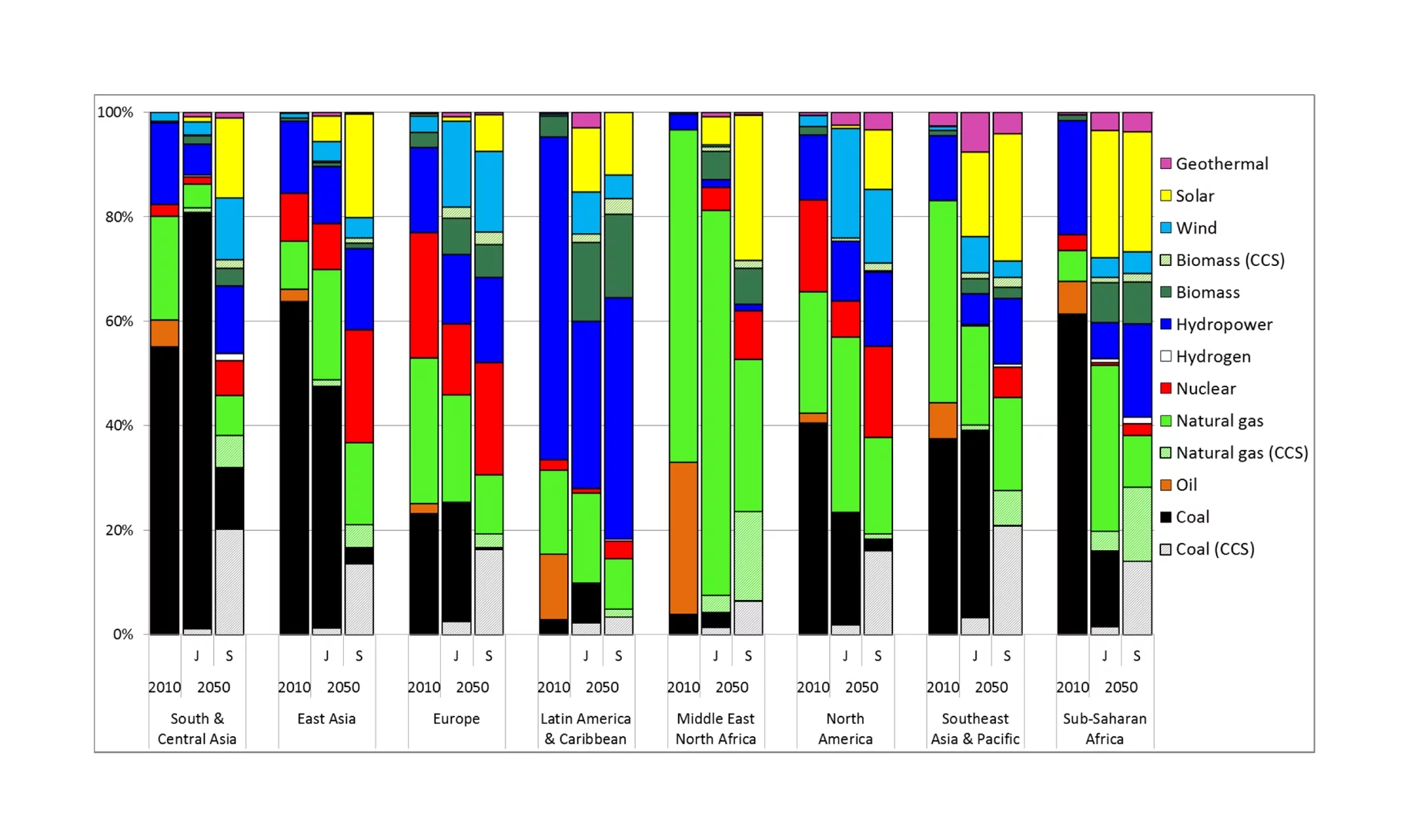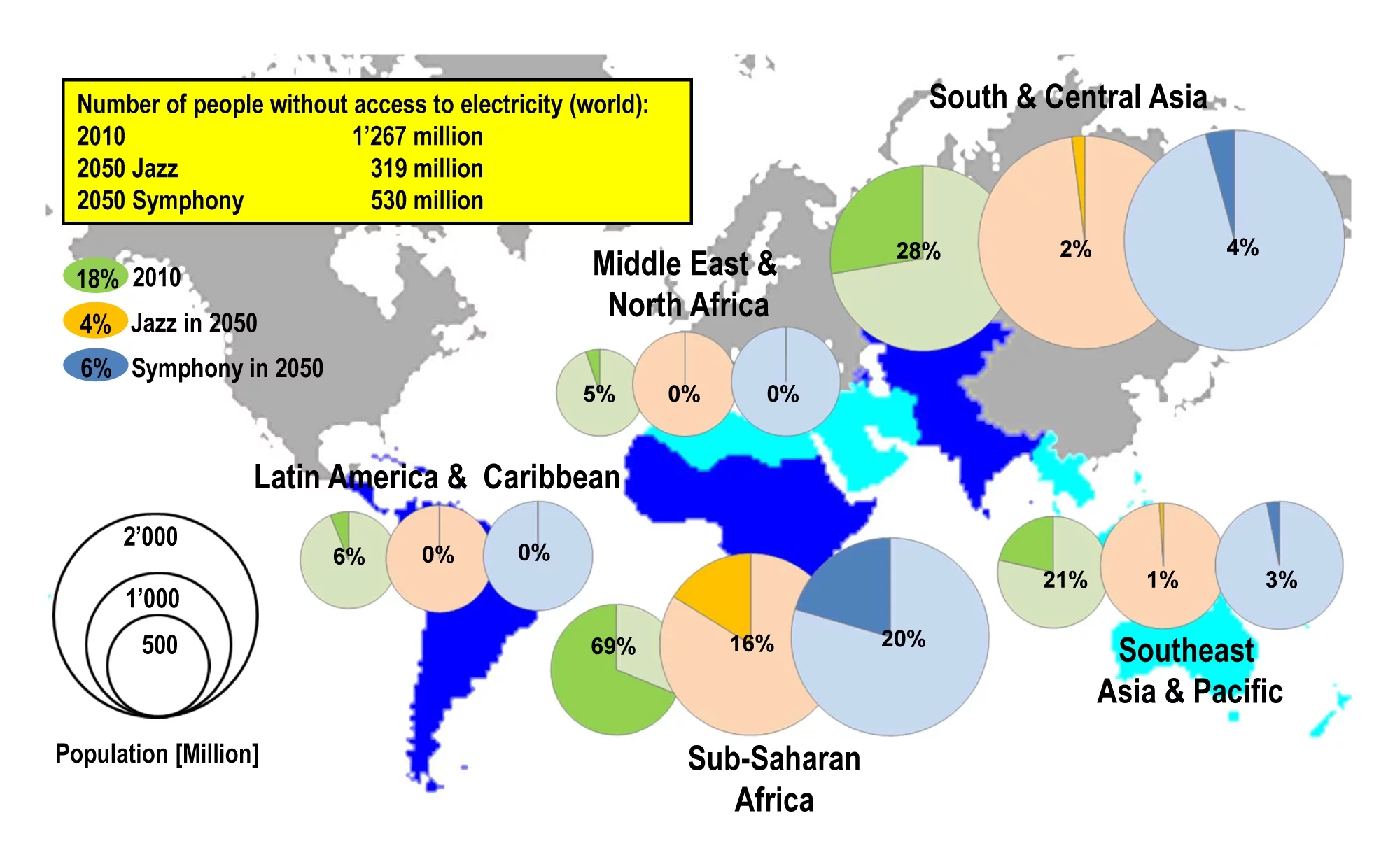How will the world secure its energy supply in 2050 and what are the possible economic, ecological and social, implications of different pathways and choices? These questions are answered by researchers at the Paul Scherrer Institute PSI in cooperation with the World Energy Council (WEC) in a study examining two scenarios covering different dimensions of economic, social, policy and technology development. The results of the study, which has now been concluded, will be presented from 13 to 17 October at the WEC’s World Energy Congress in the South Korean town of Daegu.
In January 2012 the Paul Scherrer Institute PSI and the World Energy Council (WEC) established a partnership aiming to elaborate comprehensible scenarios for global energy supply in 2050, and to examine the implications of these scenarios. This marked the continuation of a successful cooperation in 2011 which included the publication of the Global Transport Scenarios. The faith of WEC in the high level of expertise in energy economics research at PSI has now culminated in the completed study of the full global energy system.
For their analysis the PSI researchers together with WEC developed and quantified two detailed scenarios to calculate the impact of the respective development goals and framework conditions up to 2050 on parameters like energy mix, access to energy, carbon dioxide (CO2) emissions, and economic and demographic development.
Jazz versus Symphony
Musical metaphors were used to name the scenarios. In the Jazz scenario the individual stakeholders and free market forces play the lead role in decisions about energy carriers and technologies. Key elements in this scenario include higher income and affordable access to energy. From an ecological perspective, the strategy anticipates different levels of environmental protection emerging in different parts of the world at different times, along with adjustments and adaptation to environmental damage instead of avoiding damage altogether.
In the Symphony scenario there is a stronger involvement of governments and international cooperation with a focus on energy security and avoiding environmental damage. In this scenario renewable energies are promoted to a greater degree. State support also helps to mitigate the financial and other risks of new large-scale hydropower and nuclear power plants. In addition, deployment breakthroughs are realized for carbon capture and storage technologies thanks in part to state initiatives.
Energy consumption increases in both scenarios
Even if the trend towards energy efficiency is stepped up, these measures are unlikely to fully counterbalance economic and demographic growth. Consequently, global energy consumption increases in both scenarios.
In the Jazz Scenario the global economy grows rapidly, while by contrast the global population increases moderately. Greater economic growth leads to higher energy needs despite steady improvements in energy efficiency. Fossil fuels continue to cover a large share of these energy needs, meaning that CO2 emissions increase by around 50 percent compared to today.
In the Symphony Scenario the economy grows at a slightly slower rate while the global population increases more than in the Jazz scenario. Despite greater improvements to energy efficiency in the Symphony world, energy consumption still increases compared to today. Per capita energy requirements, however, fall slightly compared to today and CO2 emissions are reduced by 40 percent despite increases in population and economic output. The power production sector undergoes an important transformation, driven by state support for renewable energies, hydropower, nuclear power and the deployment of CO2 capture and storage in fossil fuel power stations. This transformation supports reduced CO2 emissions and climate protection policy, but requires a third more investment in electricity generation than in the Jazz scenario, although the latter produces around 10 percent more electricity.
Implications for the climate and for energy poverty
There are significant differences between the scenarios when it comes to the climate implications. This was the conclusion drawn by the PSI researchers from the latest findings of the Intergovernmental Panel on Climate change (IPCC). In the Jazz Scenario it is unlikely that the goal of restricting global warming to a maximum of 2 °C will be achieved by the end of this century. By contrast, the Symphony Scenario may be more on track to achieve this goal although additional climate policy action would be needed to increase the likelihood of remaining below this threshold. In both scenarios global energy poverty thankfully diminishes. This trend is stronger in the Jazz Scenario where the number of people with no access to electricity falls from 1.3 billion today to around 300 million in 2050, supported in particular by the higher economic growth in this scenario.
The upcoming issue of the PSI Energy-Spiegel newsletter to be pulished on Monday, October 14th, contains further details of the findings of this study.
Text: Leonid Leiva
The scenario calculations were undertaken using PSI’s Global Multi-regional MARKAL (GMM) model. This optimisation tool belongs to a family of computational models used around the world by many research groups in the field of energy system analysis, developed and maintained under the aegis of the International Energy Agency (IEA). The model used by PSI calculates the most affordable composition of energy supply in 15 world regions under given framework conditions. This framework differs between the two scenarios - Jazz and Symphony. For a stipulated energy requirement the model selects the optimum combination from around 400 different energy technologies (e.g. power stations, heating, motor vehicles) in each region. It also takes into account consumption by industry, transport and households. The results primarily depend on how much energy technologies and fuels cost and when they can be used, and also on how the population and the economy will develop. In this context, consideration is given to future technological progress for instance the increasing efficiency of power stations. The expected cost developments of power stations, and extraction of coal, gas and oil are likewise taken into account. The costs of CO2 emissions and the different regional opportunities for the use of renewable energies are part of the calculations, too. The scenarios are not forecasts but give “if-then” answers. Together with the World Energy Council (WEC) PSI is developing such scenario modelling in an open-source form to improve accessibility and transparency.
About PSI
The Paul Scherrer Institute develops, builds and operates large, complex research facilities, and makes them available to the national and international research community. The Institute's own key research priorities are in the investigation of matter and material, energy and the environment; and human health. PSI is Switzerland's largest research institution, with 1500 members of staff and an annual budget of approximately 300 million CHF.
Contact
Dr. Hal Turton, Head of the Energy Economics group, Laboratory of Energy Systems Analysis, Paul Scherrer Institute,
Telephone: +41 56 310 26 31, E-mail: hal.turton@psi.ch
Dr. Martin Densing, Energy Economics group, Laboratory of Energy Systems Analysis, Paul Scherrer Institute,
Telephone: +41 56 310 25 98, E-mail: martin.densing@psi.ch
Original Publication
The complete contents of the study will be available for download from Monday, October 14th, at:
http://www.worldenergy.org/publications/2013/world-energy-scenarios-composing-energy-futures-to-2050


